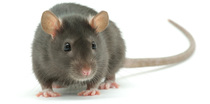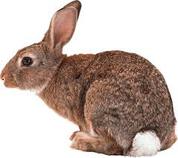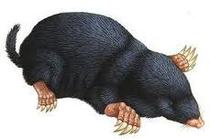
Vertabrate
CBM Services provide a professional
Mole, Mouse, Rat and Rabbit extermination & control service for business customers & individuals alike.
The most common species of mole mouse rat & rabbit you will encounter in Jersey are: -
Common Mouse
This is by far the most common mouse found in the
Jersey, they nearly always live near humans and eat just about anything. House mice can also cause substantial damage when feeding on grain or chewing on wires which has the potential to cause fires.
House mice carry bacteria and viruses the most significant being Salmonella and Lymphocytic choriomeningitis virus (LCMV). Salmonella is an important food poisoning bacteria and so mice in kitchens
is definitely taboo. Pest mice habits of feeding sporadically in many different areas makes food contamination a certainty and food surfaces, utensils and cutlery and crockery is also
likely.
Wood Mouse
The wood mouse is a fairly common mouse, closely related
to the yellow-necked mouse but differs in that it has no band of yellow fur around the neck, has slightly smaller ears, and is usually slightly smaller overall.It is found across most of Europe and
is a very common and widespread species, is commensal with people and is sometimes considered a pest. Other common names are long-tailed field mouse, field mouse, common field mouse, and European
wood mouse.
Brown Rats
Are also known as Norwegian Rats, Sewer Rats and Common
Rats they are by far the most prevalent species of rat found in Jersey, and the second most common mammal found on earth after humans. The population of rats in the Jersey has been steadily
increasing and it is estimated that there is 1.3 rats per human currently inhabiting our shores.
Rabbits feed by grazing, taking any young shoots close to cover and nibbling them down squarely to 10mm or so above the ground. In cereal crops extensive grazing can occur and crop loss can run into many £1,000's. Grazing on vegetables or flowers in domestic gardens can also be infuriating. Rabbit damage is not limited to feeding, but their burrowing in areas such as golf courses, graveyards, railway embankments and farmland can cause much disruption. Apart from the visual damage caused by grazing, a number of small scrapes may be noticed, where attempts to obtain roots have taken place. These signs and large amounts of hard round droppings can easily be seen. Often, on well established routes to feeding areas runs are easily visible and they can be followed from the warren to the chosen feeding ground. Damage to trees or shrubs can also be seen in the winter months when food is short and this can be extensive to smooth barked species. Trees can be killed by this stripping of the bark. Rabbit control can be provided by live trapping, netting, ferreting & conventional methods, repeat or follow-up visits are at a reduced rate.
Moles are industrious diggers and can create 20m of tunnel
per day. They leave characteristic mounds of earth on the surface as they excavate their tunnels. Large chambers within the tunnel system are lined with dry grass and used for nesting during periods
of rest. Moles feed mainly on earthworms, but they also eat a variety of other invertebrates, as well as snakes and lizards. They inhabit deciduous woodland, grassland and farmland - wherever the
soil is deep enough for tunneling.
Moles breed from March to May only. The male (boar) visits the female (sow) in her burrow and leaves straight after mating, taking no part in raising the young. The female builds a special chamber
about the size of a football and lines it with dry grass and leaves. An extra large molehill, or 'fortress', usually covers the nest chamber. A food store will be close by.
After a gestation period (time between mating and birth) of 30 days, a litter of 2-7 young is born. The babies are blind and naked at birth and do not grow fur until they are 2 weeks old. At about 3
weeks of age their eyes open. They grow quickly, feeding on their mother's milk, and are ready to leave the nest at about 35 days. They travel overland searching for territories of their
own.





